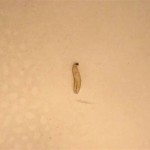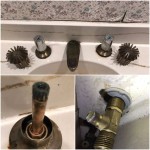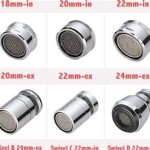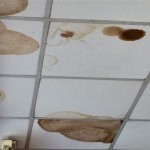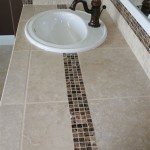Plumbing Under Bathroom Sink Diagram: Understanding the Basics
The plumbing beneath a bathroom sink, though hidden from view, plays a crucial role in the functionality of this essential fixture. Understanding the components and connections within this system can be invaluable for both homeowners and plumbers. A clear visual representation of the plumbing under a bathroom sink, often depicted in a diagram, can help simplify the complexities and provide a roadmap for troubleshooting, maintenance, and even DIY projects.
Key Components and Connections
The plumbing system under a bathroom sink typically comprises several key components:
-
Sink Drain:
This is the primary pathway for water to exit the sink basin and enter the drainpipe system. It usually consists of a pop-up stopper mechanism that allows the user to control water flow. -
P-Trap:
This is a curved pipe, shaped like a "P," that sits below the sink drain. Its purpose is to trap a small amount of water, preventing sewer gases from entering the living space. -
Drainpipe (Waste Line):
This pipe connects the P-trap to the main drain line, carrying wastewater away from the bathroom. It is typically made of PVC or ABS plastic, but older systems might use metal. -
Supply Lines:
These are the pipes that deliver water to the faucet. They are usually made of copper, PEX, or braided stainless steel, and connect to the hot and cold water supply lines in the wall. -
Faucet:
This is the device that controls the flow of water from the supply lines to the sink basin. It can come in various styles and designs, with components like a spout, handles, and aerator.
Understanding the Flow of Water
The plumbing diagram helps visualize how water flows through the system. When you turn on the faucet, water travels through the supply lines (hot or cold) to the faucet, then into the sink basin. Once the water has served its purpose, it is directed into the drain through the pop-up stopper. The water then flows through the P-trap, capturing a small amount of water to prevent sewer gas backflow. Finally, the water continues through the drainpipe, eventually connecting to the main waste line for disposal.
Benefits of Understanding Plumbing Diagrams
Familiarization with the plumbing diagram under a bathroom sink provides several benefits:
-
Troubleshooting and Repair:
When encountering issues like leaks, clogs, or slow drainage, a diagram can help identify the problem area and facilitate repairs. It shows the connections and component locations, allowing you to pinpoint the source of the problem. -
Maintenance and Cleaning:
Regular maintenance of the plumbing system is essential for longevity. A plumbing diagram can guide you through tasks like cleaning the P-trap, checking for leaks in supply lines, or replacing worn-out components. -
Planning DIY Projects:
If you're planning a DIY project like replacing a faucet or installing a new sink, a diagram provides a roadmap for understanding the connections and procedures.
In conclusion, understanding the plumbing diagram under a bathroom sink empowers homeowners and plumbers to effectively troubleshoot, maintain, and even modify this essential part of the bathroom. By familiarizing yourself with the components, connections, and water flow, you can gain valuable insights into the functionality of the system, enabling informed decisions and proactive actions for a well-functioning and durable bathroom sink.

Bathroom Sink Plumbing Diagram Diy Sinks Drain Kitchen Remodel

20 Bathroom Sink Drain Parts How They Works Stopper Plumbing

Bathroom Sink Plumbing

How To Plumb A Bathroom With Multiple Plumbing Diagrams Hammerpedia

Gallery Of Bathrooms Basics 6 Tips To Plan Your Bathroom Plumbing And Layout 11

17 Ideas In 2024 Plumbing Installation Diy Bathroom

How To Fit A Bathroom Sink Diy Guides Victorian Plumbing

How To Easily Connect The Plumbing For A New Bathroom Sink Hometips

5 Natural Ways To Unclog A Bathroom Sink Hiller How

How To Install A Pipe From Sink Drain Wall Ehow
Related Posts
